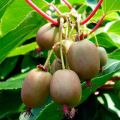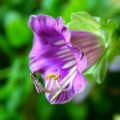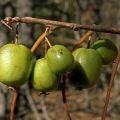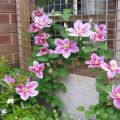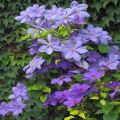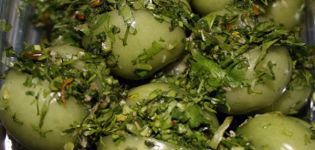Planting and care of Kampsis in the open field, reproduction and cultivation
Campsis is a vine-like plant with bright, red-orange peduncles. The culture blooms all summer, takes root in the climatic conditions of the CIS countries. Planting a campsis and further care for it does not imply any particular difficulties. Even a novice summer resident can cope with the procedures, if we take into account all the nuances given below.
What is culture
Liana Kampsis, or Tekoma, is a fast growing culture. Shoots are held on a support, reach 15 meters high, 5 cm wide. Flowers are reddish or orange, in shape similar to gramophones. The plant will decorate any garden. Pollen falls in June-July, lasts until the first frost. Campsis grow safely in the middle lane, and in the North, they are rarely cultivated.
Kampsis types
There are many varieties of creepers kampsis. Each of them differs in flower color, size. The principle of planting and grooming is usually the same.
Rooting
A rooted vine native to North America. From there, the culture was brought to Europe, where it has been widely grown in private gardens, parks, squares as a decorative element since the 17th century. The vigorous liana has pointed toothed leaves. The species blooms magnificently with large tubular orange-red inflorescences. The plant rests on trellises with aerial roots.
Large-flowered campsis
The variety developed initially in Japan and China. There she is in great demand. The culture is large-flowered, more thermophilic and less resistant to adverse weather conditions, diseases, harmful insects, in comparison with the rooting species. Liana also bears the name - "Chinese", almost never found in the countries of the former USSR. It is cultivated as a decorative flower in India, Vietnam, Pakistan, Taiwan and other states of Southeast Asia.
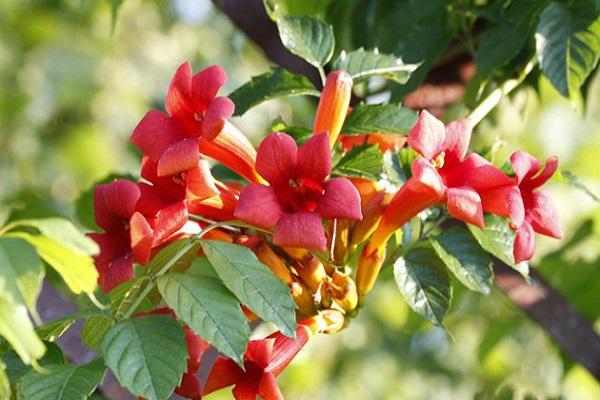
Hybrid campsis
The variety is a shrub with a spreading bush. The leaves contain from 7 to 11 leaves. The color of the buds is similar to the large-flowered species. The hybrid liana has medium frost resistance and has been cultivated since 1883.
Golden
The golden variety of Kampsis is famous for its large yellowish buds, up to 10 cm in diameter. Shoots, leaves are rich green, strong. The variety is moderately resistant to frost, disease and beetles. This is one of the forms of the rooting species.
Early Kampsis
This is a subspecies of the rooting creeper Kampsis, which blooms earlier than other varieties. Panicles are orange-red, small, up to 5 cm in diameter.
Dark purple
The color of the flowers of this variety is fully consistent with the name. The buds, due to their shade, merge with the foliage. The subspecies is widely used in landscape design as a basic element.
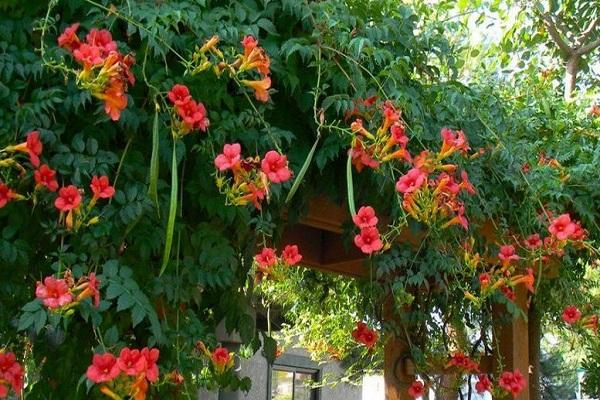
Thunberg
The flowers of Kampsis Thunberg are bright orange, medium in size. The variety was obtained by crossing a rooting and large-flowered liana. Frost resistance of the subspecies is average.
Morning freshness
The liana variety is distinguished by the largest flowers. They are orange with a yellow center and reddish veins on the petals. Campsis is similar to the Thunberg subspecies.
Magnificent Kampsis
Liana variety Kampsis is famous for its bright apricot flowers. Their size is average, about 5 cm in diameter. The variety is similar to the two subspecies above.
Flamenco
Kampsis Flamenco flowers are orange, standard color, with an elongated tube. Oval petals. The size of the inflorescences is large, up to 10 cm in diameter.

Golden autumn
The variety blooms with yellow-orange flowers. There is a dark color in the middle. The inflorescences resemble autumn leaves, which is why they got this name.
Flava
Flava campsis is famous for its large-sized sandy-yellow flowers. Their diameter is about 10 cm.
Chinese
The Chinese variety has no aerial roots, it is attached to the support due to its shoots. The plant is of short stature, there are few leaves on the plate. Peduncles are large, orange in color. Chinese Kampsis does not withstand severe frosts, like its rooting relative, but it looks more romantic.

Landing Kampsis
Planting liana kampsis should be in accordance with agrotechnical standards. It is important to choose the right place, timing, prepare the soil, planting material. Provided correct planting, the plant will take root, it will bloom steadily.
Seat selection
The culture prefers well-lit places where there are no drafts. It takes root quite well in partial shade, but the bloom will not be as intense.
The choice of location depends on the climatic conditions in the region, the territorial features of the site.
- On plots where the land warms up slowly with the arrival of spring, precipitation is uniform and abundant, plots with a slope to the south, south-west or southeast are allocated for planting vines.
- In an area localized in the lower parts of the relief, the Kampsis suffer from cold night fogs. Lianas are sometimes attacked by fungi, leading to their death.
- In the South, where precipitation is uneven or low in summer, choose places on the plains.
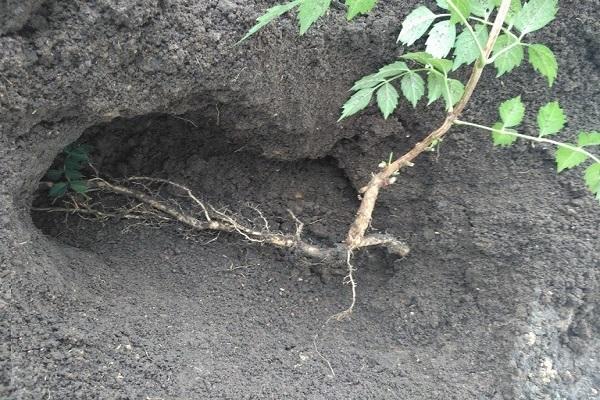
It is undesirable to plant a vine next to residential windows. Campsis attracts bees, wasps, hornets, due to the fact that the flowers produce a lot of nectar. Still do not plant a vine near the walls of houses, brick or stone fences. When it grows, it puts down powerful roots that can damage structures.
What the earth should be
Liana Kampsis prefers to grow in fertile, loose soil with a slightly acidic reaction. Poor and dry soil does not give the crop the strength it needs to grow properly.
Planting Kampsis in the garden
In early April, after leveling the risks of night frosts, the germinated seedlings are ready to be transplanted into the garden. Campsis should be planted in holes 50 cm deep and in diameter made in advance in the fall.
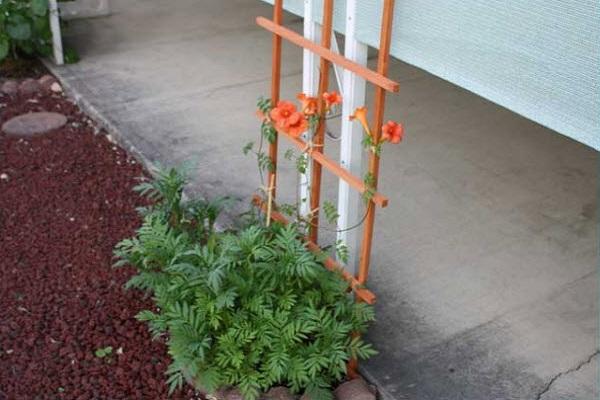
- The top layer of soil, when preparing a hole, is mixed with 0.5 kg of mineral matter and 5 kg of compost. This combination is poured onto the bottom. The rhizome, previously straightened, is placed there.Pour the remaining soil mixture into the recess in parts, lightly tamping the earth.
- Take 1 bucket of settled water to water the planted plant. When it is absorbed into the soil, sprinkle the surface with a layer of mulch. You can take peat or compost.
- The plant needs support, a 1.5 meter stick is taken. When it is dug in, the seedling is tied up.
- So that the liana does not grow much, slate or metal sheets are dug in around the trunk zone. They are buried 0.8 meters.
You don't need to fertilize campsis, but when you add nutrients to the ground, it will bloom even more abundantly, more magnificently, and longer.
Care
The main requirements for caring for a vine include timely loosening of the soil, removing weeds, pruning and feeding. It is important to carry out preventive treatment against harmful beetles and diseases.
Watering
The liana should be irrigated 1-2 times a week with settled water. It is important to prevent stagnation of moisture in the root system.
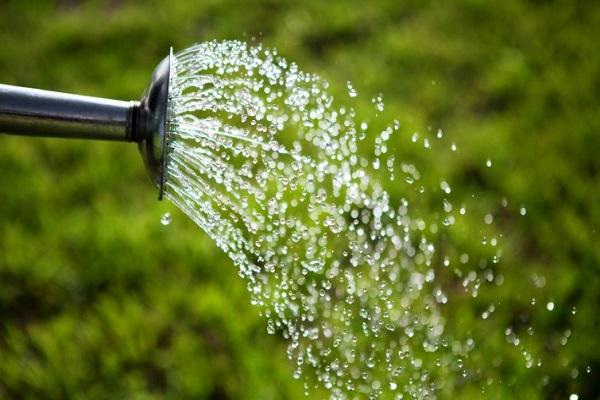
Frost resistance
Liana kampsis withstands average winter, withstands temperatures up to -20 degrees. She safely tolerates dustiness, gas pollution.
Top dressing of Kampsis
You can make nitrogen-phosphorus compounds to stimulate pollen. 1-2 top dressing is done per season, after preliminary loosening of the soil.
Circumcision of Kampsis
Liana grows quickly, it needs regulation of growth by pruning. It is carried out in the fall, once a year, at the end of the growing season or in the spring before the buds swell.
- All branches are cut off from the young thicket, except for well-formed specimens. It is necessary to use a disinfected secateurs.
- Tie up the growing shoots during growth to the supporting structure, directing them in the required direction.
- Carry out the manipulation for 3-4 years in a row, until the trunk of the vine grows to the desired size.
With the help of the pruner, you can create the desired shapes of vines, green fences.
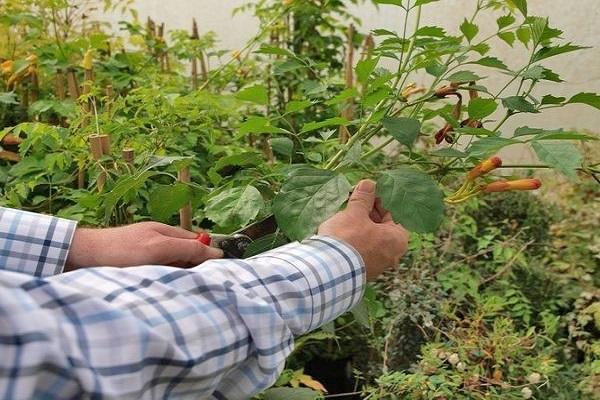
Preparing for winter
Campsis needs shelter before wintering in regions where the air temperature drops below -20 in winter. The plant is removed from the support, covered with hay or dry leaves. Burlap and polyethylene are placed on top to protect against wet snow. Vines growing on elevated structures are covered with sand, spruce branches, and covered from above in the same way.
Support
It is advisable to choose a tapestry, removable, folding. This will simplify the shelter procedure for the winter. You can build a metal wire frame.
Breeding Kampsis
Liana is propagated by layering, seeds, root shoots. They also resort to planting lignified or green cuttings.
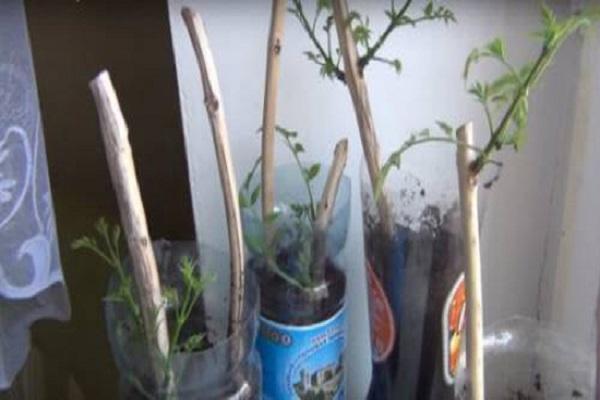
Seeds
Seeds are planted in spring and harvested during ripening. Instances winter well, but in a warm room with an air temperature of +25. In March, the seeds are planted in boxes with loose soil, periodically moistened. Planting depth should be approximately 0.5 cm. The first shoots are formed in a month. They are transplanted into the garden when 6 leaves appear. The method is rarely practiced, since pollen occurs after 7 years.
Layers
In the spring, a stem is chosen that grows near the surface of the earth. It is bent to the ground, fixed in this position. During the entire growing season, it is important to ensure that the soil around the cut is always loose and moist. In the spring of the following year, the rooted specimen is separated and planted in the garden. If you propagate a vine in this way, it will grow and develop rapidly.
Cuttings
Green petioles are prepared in June or July, only the middle part of the stem is taken. All leaves are removed from it, except for the top 3 pieces, which are shortened by 2/3. The bed is made in a darkened place, the cutting is placed there at a slope of 45 degrees. Water the planted specimens, mulch the surface of the rows.
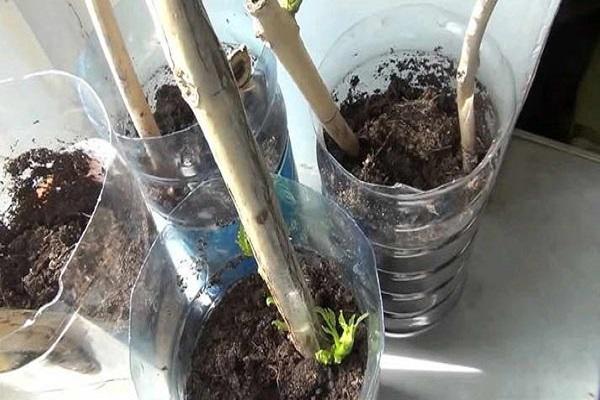
Dividing the bush
When dividing the bushes, several healthy parts are taken. They are transplanted to a new place in the same way as cuttings.
Root shoots
It is necessary to dig up the process of the vine with part of the root, plant it in the garden. The event will be held in the first month of spring or after October 20.
Harmful beetles and diseases
Campsis is rarely attacked by harmful beetles and diseases. Sometimes it is attacked by aphids, which start up in buds and leaves. Get rid of it with vodka, sprinkling from a spray bottle. You can water the plant with a shower by flushing the aphids with a stream of water.
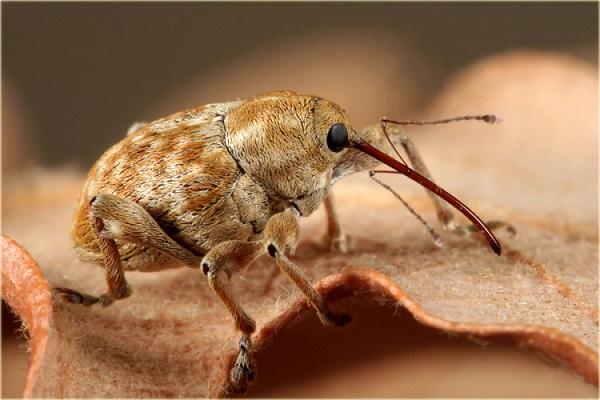
Application in garden decor
Campsis is widely used to decorate arches, gates, roofs of summer arbors, garages. Depending on the variety, bright flowers create the atmosphere of a fabulous garden on the site. When decorating roofs with Kampsis, it should be borne in mind that caring for the plant will become more complicated.
Regional features
In the regions of Russia, liana kampsis usually takes root without problems. Gardeners highlight several regional features that are important to consider before planting.
Moscow suburbs
With proper care, shelter for the winter, the liana will live for more than a dozen years. The Moscow region is considered an ideal place for her breeding.
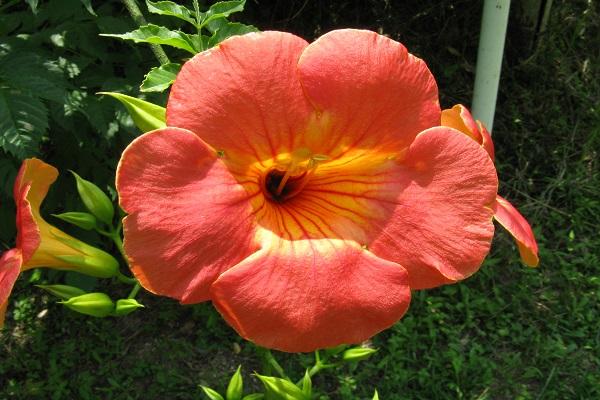
Ural
In the Urals, cold winters prevail, the air temperature often starts below -40. This is an unfavorable region for growing vines. Better to plant it in a winter garden, greenhouse. On the street, it is unlikely to take root.
Middle latitudes
The culture will bloom profusely with proper care. With prolonged frosts of -25 or more, it is worth covering the plant. If this is not done, the bush will not bloom, lose its immunity or freeze.
Possible reasons for the absence of pollen
Liana may not form inflorescences due to planting seeds. Pollen will be in this case in 5 years. When grafted, the buds will form after 3 years. Drafts, sudden spring cold snaps are still considered to be the culprit of their absence. When the liana is attacked by diseases, beetles, flowering also suffers.
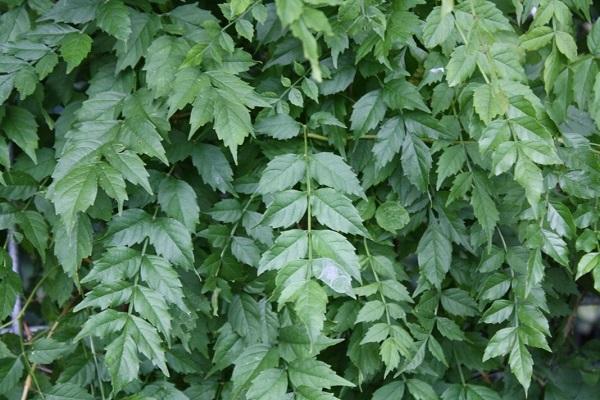
Reviews
Below are the responses from Kampsis growers.
Oksana Savelyeva, 35 years old, Kiev.
Hello! More than 5 years ago, I planted Kampsis "Golden Autumn" at the dacha. Flowering was observed after 3 years. The site has become more presentable, plant care does not bother me.
Pavel Ponomarenko, 50 years old, Moscow.
Greetings! I grow liana kampsis on the roof of the garage. The shoots have grown, now the whole structure is covered with them. In the summer at the dacha beauty, the flowers are bright orange, chose the Flamenco variety.

Alexey Movchan, 60 years old, Dnipro.
Hello! Liana Thunberg has been growing at my dacha since spring 2007. Pollen is abundant every year, lasting all summer. Flowers of incredible beauty. The plant was attacked by aphids, but successfully overcame it with alcohol.


